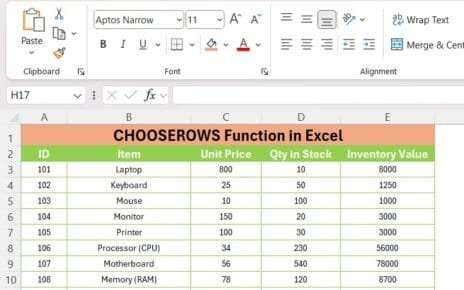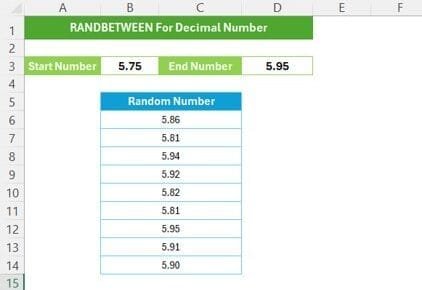In this article, we’re diving into the MIN & MAX Function in Excel, two of the most powerful and often-used tools when working with data. Whether you’re tracking sales, managing employee performance, or just organizing numbers, these functions can make your job much easier. The best part? They’re simple to use and can provide critical insights immediately.
Let’s explore how the MIN & MAX Function in Excel can help you find the smallest and largest values in your data. For our example, we’ll work with employee sales data to show you exactly how these functions work.
What is MIN & MAX Functions in Excel?
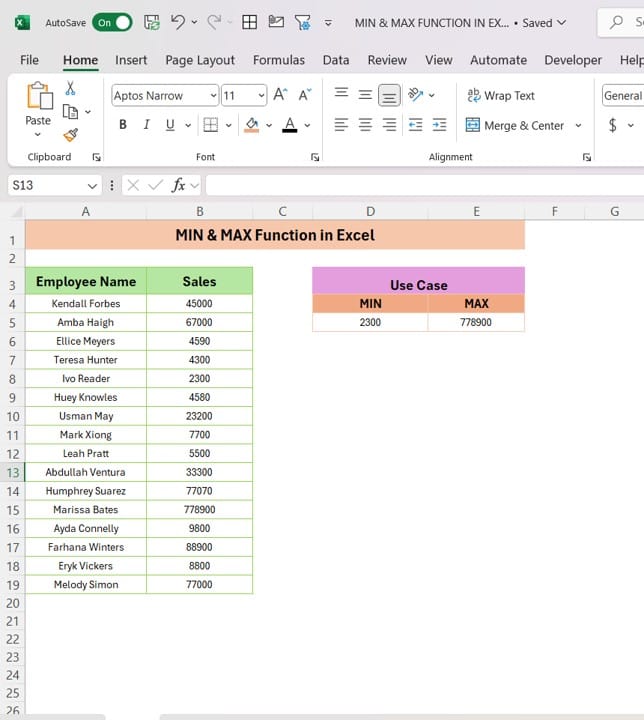
Before we jump into the step-by-step process, let’s break down what the MIN and MAX functions do.
- MIN Function: This function allows you to find the smallest (or minimum) value in a range of numbers.
- MAX Function: This function helps you find the largest (or maximum) value in a range of numbers.
Both functions are extremely handy when analyzing numerical data, and you can use them in many real-world scenarios.
Example Scenario: Employee Sales Data
To demonstrate how these functions work, we’ll be using a set of sales data from different employees. Our data includes two columns:
- Column A: Employee Name
- Column B: Sales Figures
Using MIN Function in Excel
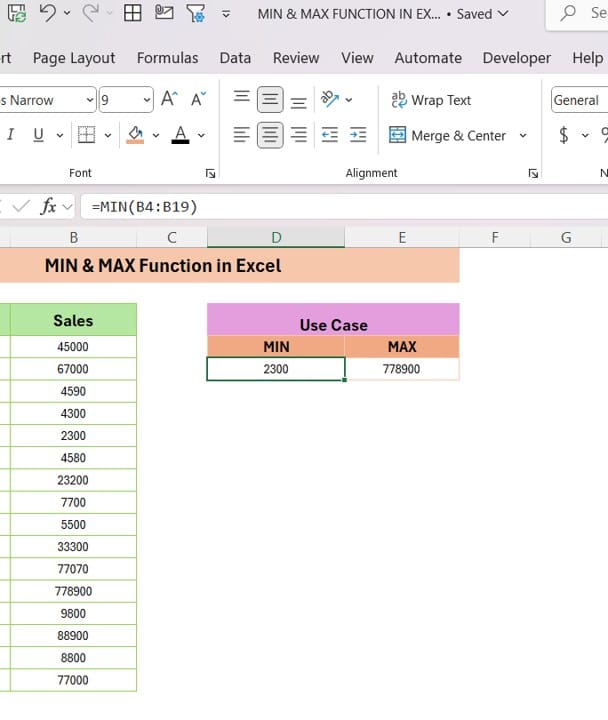
We want to find out the employee with the lowest sales. To do that, we’ll use the MIN function to scan the entire sales column and return the smallest value.
- Step 1: Select the cell where you want the result of the MIN function to appear.
- Step 2: Enter the formula: =MIN (B4:B19)
This formula tells Excel to look at the range of sales data in cells B4 to B19 and return the smallest value.
Result: The minimum sales value is 2300.
Using MAX Function in Excel
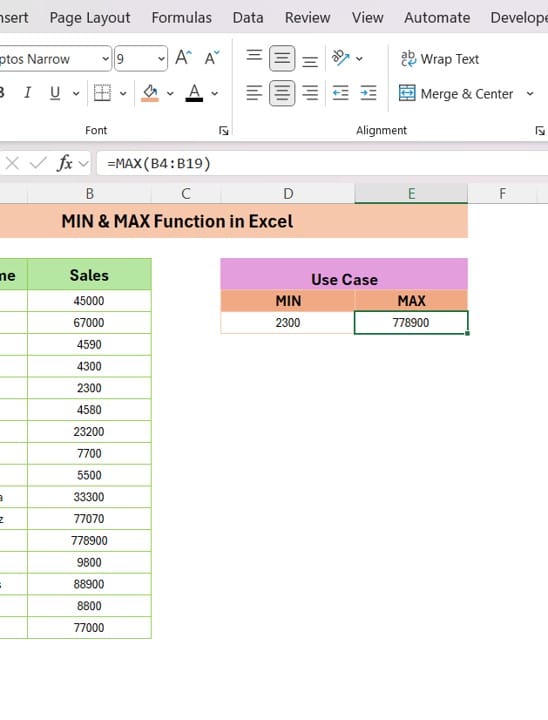
Next, we want to identify the employee with the highest sales. The MAX function works similarly to the MIN function, but instead of the smallest value, it will return the largest one.
- Step 1: Select the cell where you want the result of the MAX function to appear.
- Step 2: Enter the formula: =MAX (B4:B19)
This will return the largest sales figure from the range.
Result: The maximum sales value is 778900.
Why Should You Use MIN & MAX in Excel?
You might wonder, “Why should I even bother with these functions?” Well, there are several benefits:
- Quick Insights: Instantly find the best and worst performers without manually scanning the data.
- Business Decisions: MIN & MAX can help you spot outliers or set performance benchmarks.
- Save Time: These functions allow you to pull out critical data points in seconds, rather than going through each entry.
Practical Applications of MIN & MAX
The beauty of the MIN and MAX functions is that they are not just limited to sales data. You can apply these functions to various other fields, such as:
- Tracking personal expenses: Find out your smallest and largest expenses in any given month.
- Project management: Identify the shortest and longest task durations in a project timeline.
- Employee performance reviews: Easily highlight the top and bottom performers in a team.
Conclusion
By now, you should have a solid understanding of how to use the MIN and MAX functions in Excel. They are straightforward but powerful tools that can help you make better, data-driven decisions. Next time you’re working with a large dataset, remember to use these functions to get quick insights!
Visit our YouTube channel to learn step-by-step video tutorials
View this post on Instagram
Click hare to download the practice file

